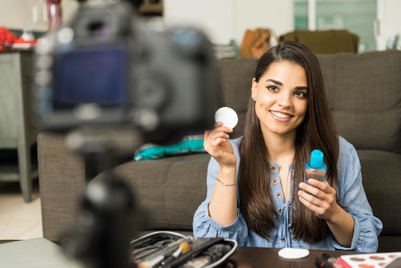If we look back at the advertising industry over the past 100 years or so, we can see four distinct communication eras: There was the age of information and education (1920-1959) — from the stagnated advertising of the war years, we exploded into the Mad Men era, where consumer magazines were flooded with clever campaigns selling everything from girdles to guns. Next was the age of awareness and seduction (1960–1995) with Wonderbra leading as the originator of titillating tactics to get buyers to purchase its lingerie. The world of marketing then shifted to one of media fragmentation and splintered audiences (1995–to 2011) that saw constant experimentation and fine-grained insight through new engagement metrics.
Now we find ourselves in the age of brand networks. And let’s admit it, we’ve all been scrambling to define and manage what has been hailed as the death of advertising as we know it. Of course, so-called traditional ad shops need to be ‘digital’ and we’ve seen many networks buying up pure-play digital agencies to catch up. But we need to resist becoming enamoured with everything digital at the expense of marketing fundamentals.
Over the past year, I’m sure many agencies have recommended a campaign that hinges on the latest app or innovation. While it’s great that we are staying on top of the latest technology, the really hard (and really important) part is identifying and developing an idea around the ‘relevant truth’. A successful campaign today is all about ‘social creativity’ where our mission is to develop ideas people want to play with, participate in, and pass on. It’s about constantly seeking, asking and listening. It’s about treating our consumers with respect and embracing their points of view. Once this respect is mutual, these consumers will be advocates for our brands.
But frankly, it’s always been this way. Social is just another form of word-of-mouth. Digital is merely an infrastructure through which ideas are delivered and engaged with. In fact, it’s high time we dumped the term ‘digital’ altogether.
|
The real game changer is when we start to look at fusing creativity with technology to bring about a totally different brand experience. Which may also mean a different agency model that meshes a variety of skills, depending on the challenge — art director, copywriter and creative technologist, or designer, UX and blogger, or copywriter, videographer, and mobile — ultimately, bringing words and images together and delivering them through very different infrastructures. The core idea is still grounded in a relevant truth. But because it was germinated from this diverse talent pool, we now have original ideas that can be executed across a myriad of mediums creating, often invisibly, an unexpected, emotional connection with the consumer.
Of course, agencies need brave, forward-looking clients to take on adventurous strategies to achieve their marketing solutions. We’re fortunate to work with the likes of VW and StarHub who really are pushing the boundaries of creative technology.
The latter recently reaffirmed its position as a fully integrated info-communications provider with mobile, broadband and cable TV services, by allowing people to experience them seamlessly across all platforms. StarHub’s ‘Love Tail’ campaign and ‘Hub it’ smartphone application ‘spoke’ to televisions and computers allowing people to interact with the characters. It didn’t look or feel like advertising. It was pure entertainment.
Ford has also shown guts by launching an international advert that flaunts their new smart parking technology. Working off the insight that bad drivers turn parallel parking into a pinball game, the car brand installed a giant pinball screen above an empty parking spot in Paris. And then it rigged the bumpers of the adjacent cars to react like pinball bumpers. The worse the driver, the more points they scored, with the winner taking a brand new car complete with active park assist. Kudos to Ford for showing the car’s high-tech feature through a fun and entertaining use of creative technology.
I believe we’ve now arrived in an era where the DNA imbedded in the age of brand networks should be flowing through every agency’s veins. The late Steve Jobs once said, “Technology is not enough. It’s married with the liberal arts and the humanities.” Perhaps our industry should take some inspiration from the world’s most valuable brand.
Patrick Rona is president of Tribal DDB and chief digital officer of DDB Group Asia Pacific




.jpg&h=334&w=500&q=100&v=20250320&c=1)

.jpg&h=334&w=500&q=100&v=20250320&c=1)


.jpg&h=334&w=500&q=100&v=20250320&c=1)

.png&h=334&w=500&q=100&v=20250320&c=1)

+(1).jpg&h=268&w=401&q=100&v=20250320&c=1)





